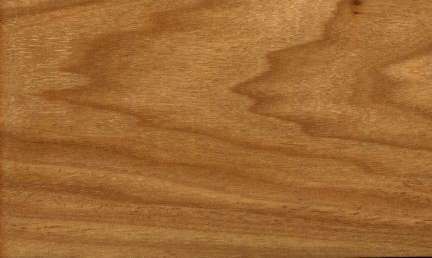
Nargusta (Terminalia amazonica)
Family: Combretaceae
Common names: Almendro, Amarillo carabazuelo, Aromilla, Canshan, Cochun, Coffee mortar, Cuiarana, Fukadi, Guayabo, Guayabo leon, Nacastillo, Nargusta, Pardillo negro, Pau-mulato brancho, Tanimbuca, White oliver
Distributed in: Bahamas, Belize, Brazil, Columbia, Cuba, Dominican Republic, Ecuador, El Salvador, Guatemala, Guyana, Haiti, Honduras, Jamaica, Mexico, Nicaragua, Panama, Peru, Suriname, Trinidad and Tobago, Venezuela (Central America, Latin America)
Distribution overview: The species occurs in Central and South America. Its range extends southward from southern Mexico through Central America and into northern South America to Brazil and Peru. The tree is common in the Wallaba forests of Guyana. It is also found in Trinidad, and is scattered in very small concentrations per acre in the forests in Belize.
Common uses: Boat building, Cabinetmaking, Construction, Flooring, Furniture , Railroad ties, Shipbuilding, Turnery, Utility plywood
Product sources: Although Nargusta is rather abundant within its growth range,
Environment profile: Rather secure within its natural growth range
Tree size: Trunk diameter is 150-200 cm
Colors: the heart isYellow, Yellowish-Olive and the sapwoodWhite to yellow, Yellow.The grain isIrregular, the textureMediumand the lusterMedium to high
Natural durability: Susceptible to attack by subterranean termites , Susceptible to insect attack
Odor: No specific smell or taste
Kiln Schedules: T3-C2 (4/4) T3-C1(8/4) US/T3-C2 (4/4) T3-C1(8/4) U
Kiln Drying Rate: Rapid
Drying Defects: Sever warping and checking , Splitting
Ease of Drying: Variable results.
Blunting Effect: Little
Boring: Fairly easy to very easy
Carving: Fairly Easy to Very Easy
Cutting Resistance: Fairly difficult to saw
Gluing: Good gluing properties
Mortising: Fairly Easy to Very Easy
Moulding: Fairly Easy to Very Easy
Movement in Service: Fairly Easy to Very Easy
Nailing: Fairly Easy to Very Easy, Pre-boring required
Planing: Very Good to Excellent
Resistance to Impregnation: Sapwood response to preservative treatment is variable
Response to hand tools: Very difficult to work with hand tools
Routing recessing: Fairly Easy to Very Easy
Sanding: Fairly Easy to Very Easy
Veneering qualities: Veneers easily, Veneers moderately easy
Steam bending: Unsuitable
Screwing: Good screw holding properties, Pre-Boring is recommended in screwing ; Turning: Gluing is often difficult
Polishing: Yields a shiny surface ; Staining: Very Good to Excellent;
- Numerical data Metric
- Numerical data English
- Strength properties
- References
 |
 |
 |
 |
| Item |
Green |
Dry |
Metric |
| Specific Gravity |
0,63 |
0,76 |
|
| Density |
|
785 |
kg/m3 |
| Bending Strength |
835 |
1223 |
kg/cm2 |
| Crushing Strength |
73 |
84 |
kg/cm2 |
| Hardness |
|
715 |
kg |
| Impact Strength |
|
83 |
cm |
| Shearing Strength |
|
134 |
kg/cm2 |
| Stiffness |
138 |
158 |
1000 kg/cm2 |
| Tangential Shrinkage |
9 |
|
% |
| Radial Shrinkage |
6 |
|
% |
| Weight |
769 |
624 |
kg/m3 |
| Maximum Load |
0,84 |
1,12 |
cm-kg/cm3 |
| Toughness |
|
210 |
cm-kg |
| Static Bending |
531 |
779 |
kg/cm2 |
|
 |  |  |  | | Item | Green | Dry | English | | Bending Strength | 11887 | 17395 | psi | | Crushing Strength | 1039 | 1205 | psi | | Density | | 49 | lbs/ft3 | | Hardness | | 1578 | lbs | | Impact Strength | | 33 | inches | | Maximum Crushing Strength | 5419 | 9349 | psi | | Shearing Strength | | 1911 | psi | | Static Bending | 7556 | 11084 | psi | | Stiffness | 1970 | 2254 | 1000 psi | | Toughness | | 183 | inch-lbs | | Work to Maximum Load | 12 | 16 | inch-lbs/in3 | | Specific Gravity | 0.63 | 0.76 | | | Weight | 48 | 39. | lbs/ft3 | | Radial Shrinkage | 6 | | % | | Tangential Shrinkage | 9 | | % | | Volumetric Shrinkage | 15 | | % | |
Heavy
Hard
Dense
Nargusta has medium strength properties in bending, crushing, and resistance to shock loads. It is low in stiffness
Boone, R.S., C.J. Kozlik, P.J. Bois and E.M. Wengert. 1988. Dry Kiln Schedules for Commercial Woods: Temperate and Tropical. United States Department of Agriculture, Forest Service, General Technical Report FPL-GTR-57, Forest Products Laboratory, Madison, Wisconsin.Chudnoff, M.,1984,Tropical Timbers of the World,U.S.A. Department of Agriculture, Forest Service, Forest Products,Laboratory, Madison.Descriptiva Data SourceKribbs, D.A. 1959. Commercial Foreign Woods on the American Market. Buckhout Lab., Dept. of Botany, The Pennsylvania State University, University Park, Pennsylvania.Lavers, G.M. 1967. The Strength Properties of Timbers. Forest Products Research Bulletin, No. 50 (Spersedes Bulletin No. 45). Ministry of Technology, Her Majesty's Stationery Office, London.Lincoln, W.A. 1986. World Woods in Color. Linden Publishing Co. Inc. Fresno, California.Teixeiro, D.E., M.A.E. Santana, and M. Rabelo de Souza. 1988. Amazonian Timbers for the International Market. International Tropical Timber Organization (ITTO) Technical Series 1, Prepared by the Brazilian Institute for Forestry Development, Brasilia, Brazil.Wangaard, F.F. and A.F. Muschler.1952. Properties and Uses of Tropical Woods III, Tropical Woods, No. 98,Yale University Press, School of Forestry, New Haven, Connecticut.WCMC. 1992. Conservation Status Listing: Trees and Timbers of the World. World Conservation Monitoring Center (WCMC, Plants Program, 219 Huntingdon Road, Cambridge, CB3 ODL, United Kingdom.
|








